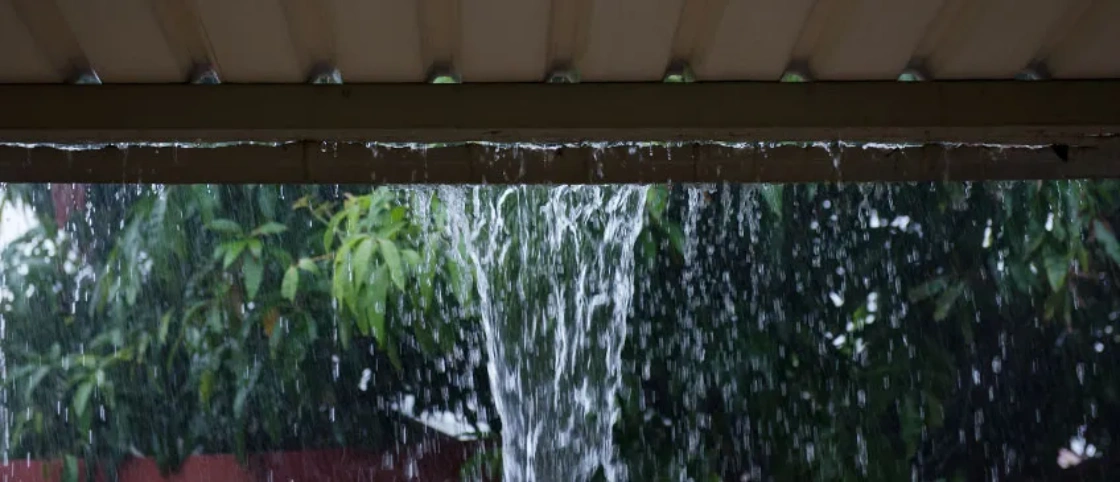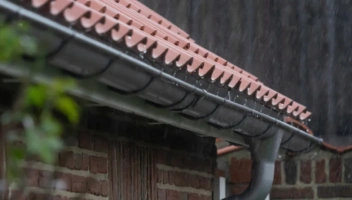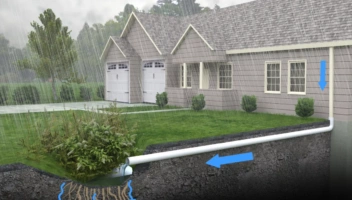Signs Your Gutters Were Installed Incorrectly

Spot those issues before they become major problems
The thrill of a new home is unmatched. Whether you’re stepping into a newly constructed house or walking new-to-you halls filled with the memories of families before you, there’s nothing quite like finding a place to settle down. And while the novelty of your new home may be fresh, it’s never too early to start protecting it from future issues—like water damage.
The gutters lining the roof probably weren’t what first drew your attention when touring the property, but there are a few warning signs to watch for that’ll tell you if those gutters were installed incorrectly. If ignored for too long, your home could fall victim to all sorts of water-based issues like foundation damage, mold, and wood rot.
No one wants their home to fall to ruin, so here at Leaf Home, we provide you with the know-how to catch minor gutter issues before they become major water damage problems.
In this article:
Gutters can be a little more complex than you may realize, so check out the following to learn the ins and outs of your home’s humble water management system.
- Common Signs of Incorrect Gutter Installation
- Consequences of Ignoring Misinstalled Gutters
- How to Address Gutter Installation Problems
- Preventing Incorrect Gutter Installation
- Frequently Asked Questions
Common Signs of Incorrect Gutter Installation
Ideally, gutters should keep water away from your home’s foundation. If you suspect your gutters may be installed incorrectly, that’s where to check first.
- Water pooling along the sides of your home likely indicates that your gutters and downspouts are not effectively directing water away from your home.
- Gutters leaking during rain storms may have gaps or seams that haven’t been properly sealed
- The slope of the gutters may also be causing water to build up and overflow.
These are just a few of the issues you are likely to find if your gutters are misinstalled:
Water Damage Around Your Home
One of the problems you want to pay the most attention to is water damage. Walk around your house regularly to check for stains, cracks in the foundation, or deteriorating siding or wood. Also, keep an eye out for mold, warping floorboards, or cracks in basement walls. These can all be signs of water damage as a result of improper water drainage around your property.
Sagging or Detached Gutters
As you are walking around your home checking for water damage, scan the gutters and how well they sit along your roof. Gutters should sit flush against the fascia board, the flat paneling that seals off the attic and makes up the roof edge. Your gutters should also be fairly even without any noticeable dips between downspouts. Any sagging or detached portions could point to broken fasteners or brackets or heavy debris weighing the gutters down.
Water Pooling or Overflowing
If your gutters overflow during heavy rain, you could be looking at gutter clogs, improper sealing, or a pitch (or slope) that doesn’t properly channel water toward the downspouts. These issues can all arise from improperly hung gutters or general wear and tear.
Gaps Between Gutters and Roof
Step under your gutters or use a ladder to check the space between your gutters and the roof edge. You shouldn’t see a gap between the two; if you do notice daylight peeping through, there may be some issues at play. The gutter could be coming loose, or the fascia board or gutter itself might be warped.
Uneven or Incorrect Downspout Placement
Downspouts channel water out of the gutters and safely direct it away from your home, but if you don’t have enough downspouts, the water can build up in gutters during heavy rain and overflow. Most homes should have downspouts at every corner, but buildings with longer walls may need even more downspouts, ideally one every 30-40 feet.
You should also check the ends of the downspouts. They should be positioned and angled so that water flows into a natural channel away from your home. Downspouts might need additional tubing on the end to ensure that the water flows far enough away.
Consequences of Ignoring Misinstalled Gutters
You may wonder why gutters are important, but if you ignore these issues, you’ll face all sorts of serious problems around your home.
Structural Damage — Through erosion, water can displace the earth beneath a home, causing foundations to shift and crack. Water can then seep into cracks in foundations and eat away at wooden supports.
Increased Maintenance Costs — A rusted gutter spike or poorly installed bracket can lead to issues with the gutter’s slope. This can then cause debris and water to build up, weighing your gutters down. This sagging pulls at other fasteners, and the original small issue snowballs into a widespread problem. Early intervention can save you money and maintenance in the long run.
Mold and Mildew Growth — Dangerous and damaging mold is a common consequence of too much moisture in the home. Sometimes mold can hide in your walls for years before revealing itself, so vigilance and prevention are key.
Soil Erosion and Landscape Issues — Bit by bit, water can easily wash away your careful landscaping and topsoil, threatening your lawn and degrading your home’s curb appeal. Unless you provide water with some dedicated pathways and drainage options, the rain will make them on its own terms, which may not align with your vision of what your lawn should look like.
How to Address Gutter Installation Problems
Early intervention is your best friend when it comes to gutter problems. Look for those initial signs of problems like water pooling or slight dips in the gutter line. These are usually easy DIY gutter repair fixes that simply require tightening some fasteners or applying waterproof sealant.
For more complex or widespread problems, especially with older homes, you may want to hire a contractor to ensure that everything is done as professionally as possible. This will give your gutters a clean slate, and you can likely handle most issues from there as long as you keep an eye on things.
Preventing Incorrect Gutter Installation
If you are looking to get new gutters installed, keep these tips in mind to prevent any issues down the line.
Choosing the Right Gutter System
All gutters are not created equal, and each home has different gutter needs. Consult with a professional to ensure that you pick out gutters that are made of the best materials for your climate and can handle your area’s rainfall.
Importance of Professional Installation
The slope or pitch of the gutters is an important part of ensuring that water flows at the right pace toward downspouts and away from your home. Professionals know how to install gutters with this and other specifications in mind, and they have access to the tools to make the job easier and more effective. While moderately experienced DIYers could probably handle gutter installation, if you want the job done right, check local listings for reliable and well-reviewed companies.
Essential Features to Look for in a Gutter System
A good gutter system should be durable, suited for the local climate, and easily maintained. You do not want gutters with too many seams or that are too small to handle the rainfall your area normally gets. You can also consider gutter guards if you have trees nearby that may shed their leaves on your roof.
A good homeowner is attentive and vigilant. Look for the early warning signs that your gutters need some help and act quickly to fix any issues you notice. Our LeafFilter experts at Leaf Home have you covered with plenty of guides and resources to help you tackle any and all gutter-related problems you may encounter.
Frequently Asked Questions
What happens if gutters are not installed properly?
Improperly installed gutters can lead to water pooling around your home, which causes water damage, mold, and landscape erosion.
How to tell if gutters are installed correctly?
Properly installed gutters should consistently handle rainwater without any leaks, pooling, or overflowing. You also shouldn’t see any gaps between the gutters and fascia board, and the gutter should be level.
How do you know if your gutters are working properly?
If your gutters are working properly, you should not see any water dripping over the edges of the gutters, and all water from the downspouts should flow away from your home’s foundation.
What if gutters are not pitched properly?
If gutters are not pitched properly, water may pool inside the gutters and overflow.
What should I do if I think my gutters weren’t installed properly?
If you think your gutters have not been installed properly, try to find the exact issue. Slight sagging or leaks can be fixed easily by tightening fasteners or by applying sealant. More severe problems may require the help of a professional, especially if you notice damage to the gutters or fascia board.


